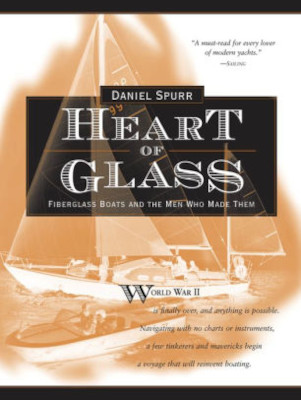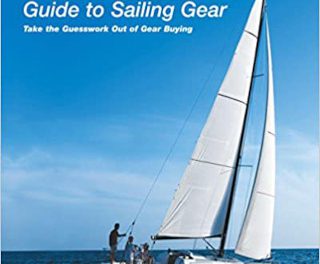 Dan Spurr, editor of Practical Sailor magazine, has written the book good old boaters (indeed, perhaps the world) awaited. Heart of Glass is the text that belongs on good old reference shelves everywhere. Dan threw himself heart and soul into this 11-year research project, a labor of love which benefits all of us.
Dan Spurr, editor of Practical Sailor magazine, has written the book good old boaters (indeed, perhaps the world) awaited. Heart of Glass is the text that belongs on good old reference shelves everywhere. Dan threw himself heart and soul into this 11-year research project, a labor of love which benefits all of us.
If you’ve wondered about the family relationships between the many boats designed by Carl Alberg, Cuthbertson and Cassian, or Phil Rhodes . . . if you’ve had trouble unscrambling the messy relationships of Cals, O’Days, and Rangers, or of Albergs and Ericsons . . . if you’ve pondered the origins of fiberglass and the first sailboats to come out of the molds . . . the answers to these and other questions can be yours with the help of Dan’s extensive research and exhaustive interviews.
Dan writes, “The timeline of fiberglass boatbuilding is a long passage of many legs on which the waypoints are the names of those who dared to buck convention, who dared to risk their careers and reputations – Herbert Muscat, Ray Greene, Taylor Winner, Carl Beetle, and John Wills, to name a few. These are men who, as children, made leaky boats from materials found on the beach and who, as their sophistication grew, blew up their mothers’ mixing bowls trying to catalyze a new resin . . . Those first boats were crude by today’s standards, but they had no seams and did not leak . . . Gradually, boat buyers overcame their skepticism of plastic and accepted the risk – first in dinghies, then on runabouts and daysailers. Americans took to the water in unprecedented numbers, effecting a fundamental change in recreation and leisure-time activities.”
It was Dan’s mission to save as much of this history as possible before more is lost. A good old boater himself, Dan knew the rest of us would rely on this book as a reference tool, so he thoughtfully provided a historical timeline, short bibliographical information on companies, and an index so we can look up and find references to designers and types of boats.
Is this the final word on fiberglass? Probably not. Someone else will have to spend 11 more years answering the inevitable questions which arise from this book: more of the intricacies of who, what, when, and why. But Dan has given us a valuable foundation. It may be one of the members of the good old boat community who invests the time and takes our communal knowledge to the next level. Or it might be Dan himself. He invites our participation: “On the chance that the book merits a second edition, however, I invite any readers with information about boats or persons omitted from or included in this book to write me in care of International Marine, P.O. 220, Camden, ME 04843.
“Heart of Glass,” Dan says, “is for all the people who brought fiberglass boats to life. Few, to my knowledge, got rich. Most got by. Nearly all did it for the love of boats.”
Dan can count himself in the group of those who did it for the love of boats. The rest of us who love these boats thank him from the depths of our hearts.
Heart of Glass: Fiberglass Boats and the Men Who Made Them by Daniel Spurr (International Marine/McGraw-Hill; 2000; 388 pages)




